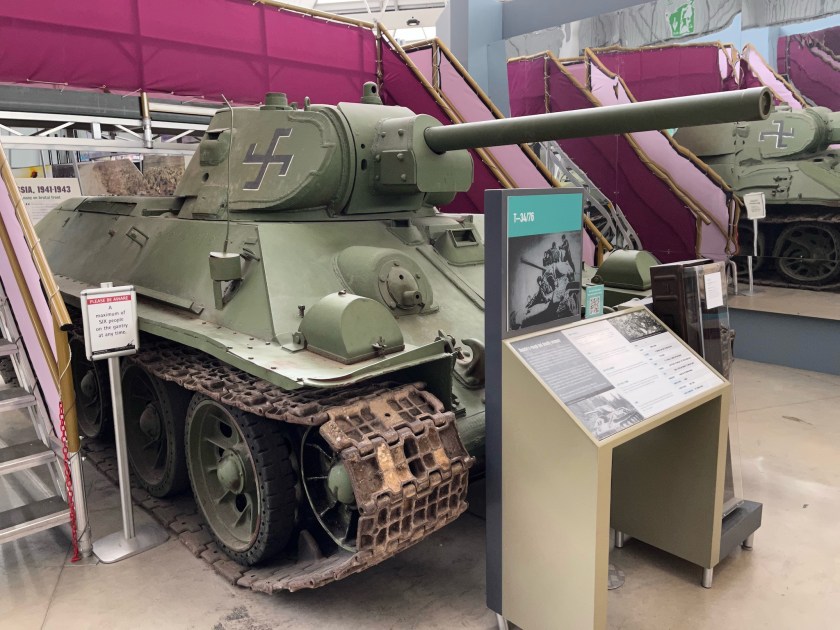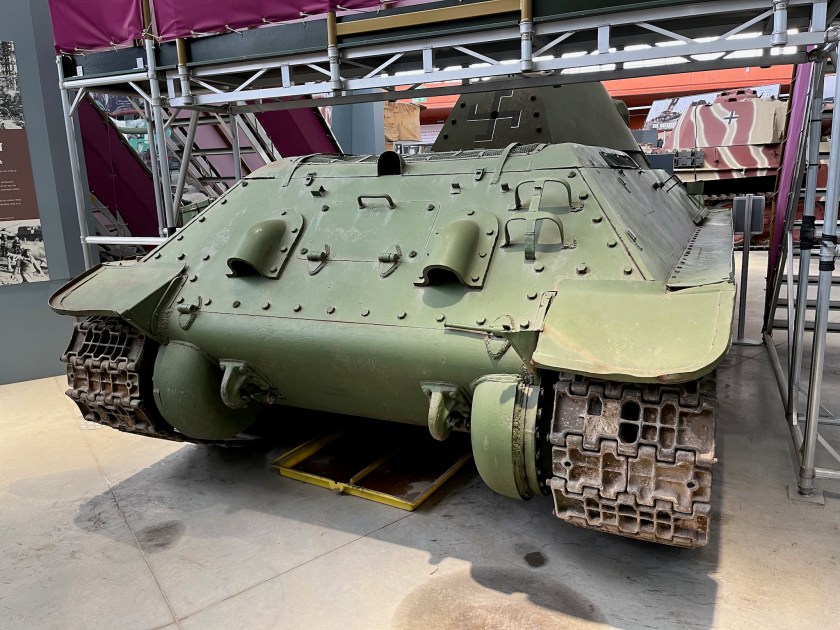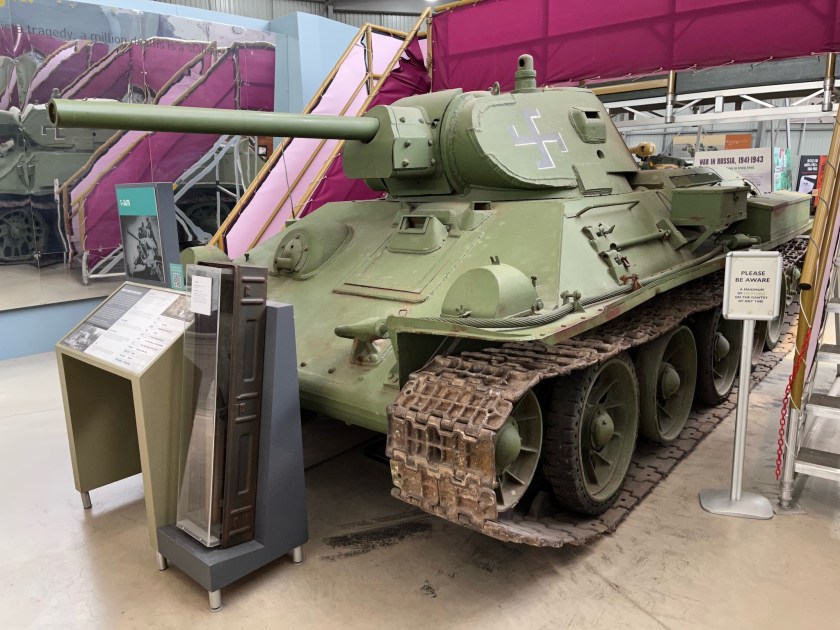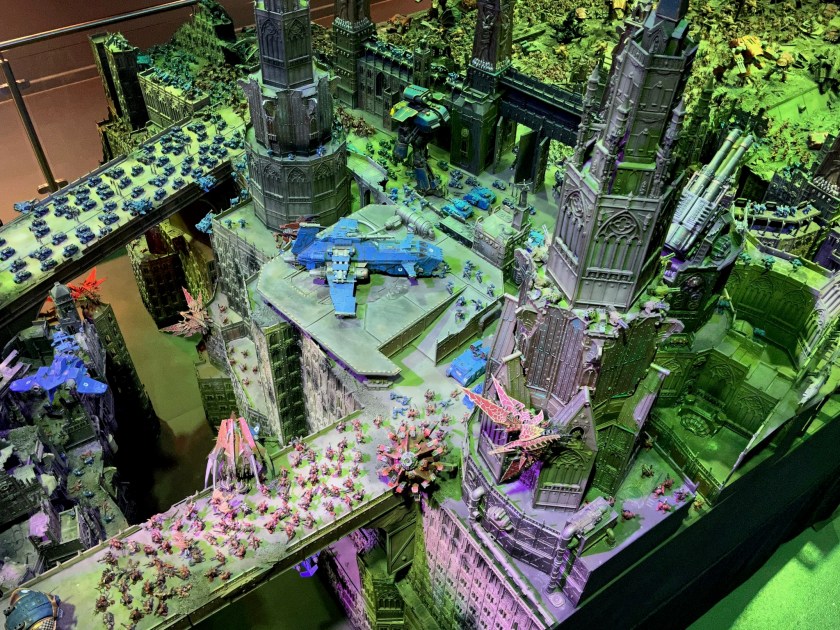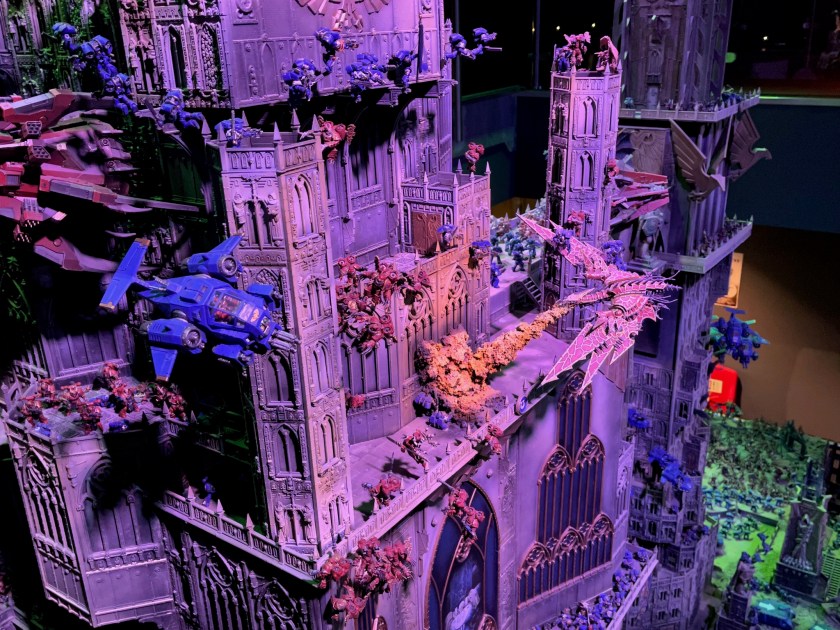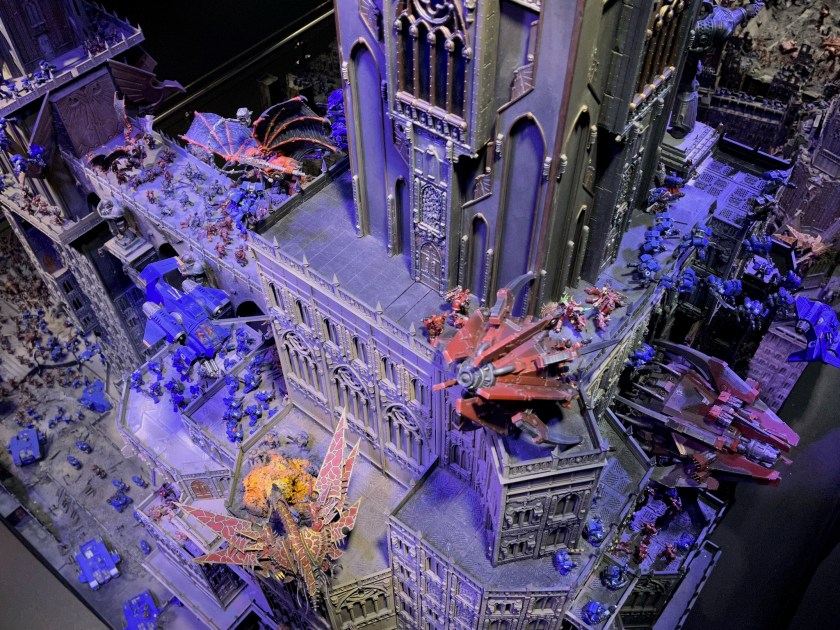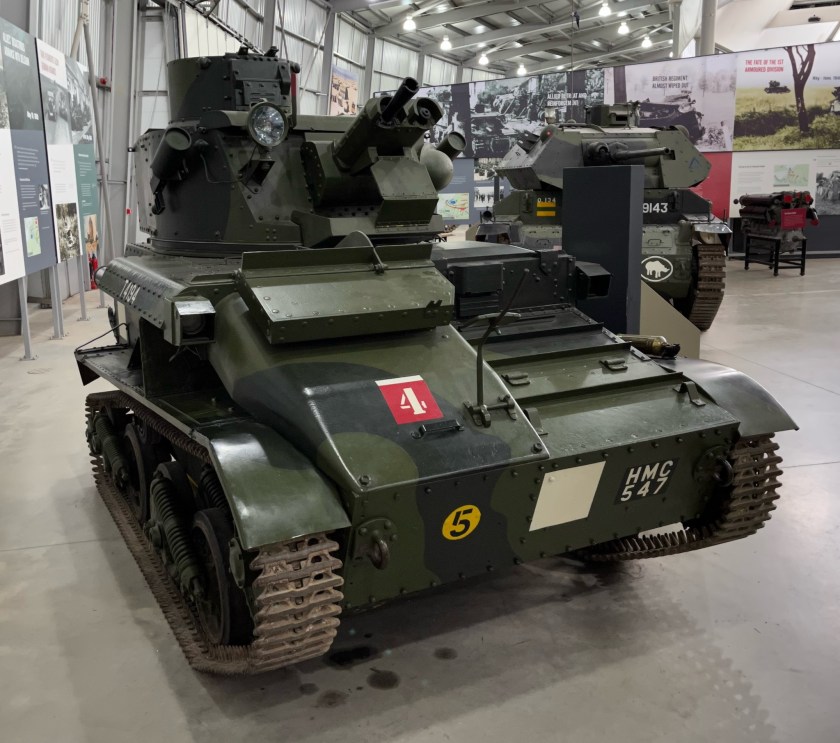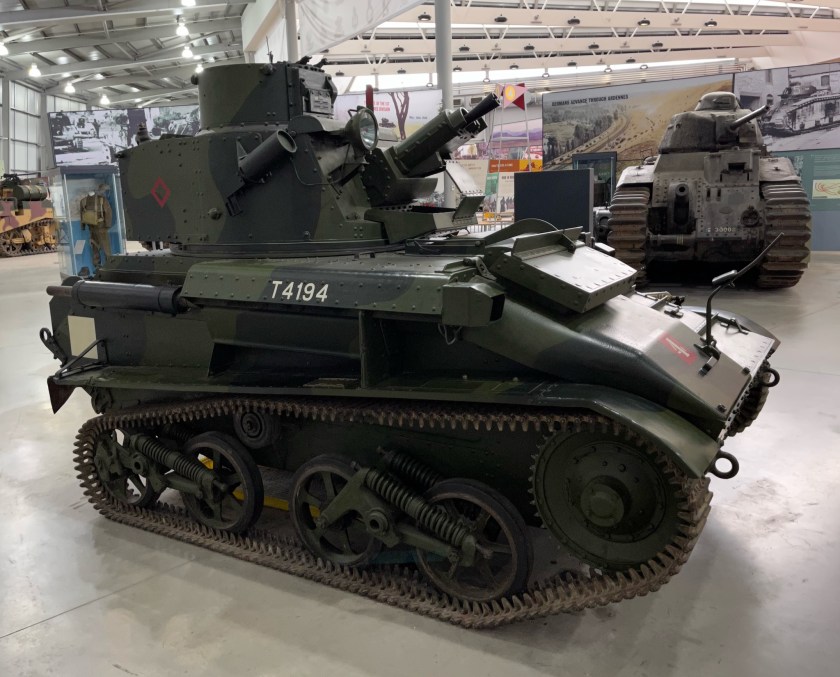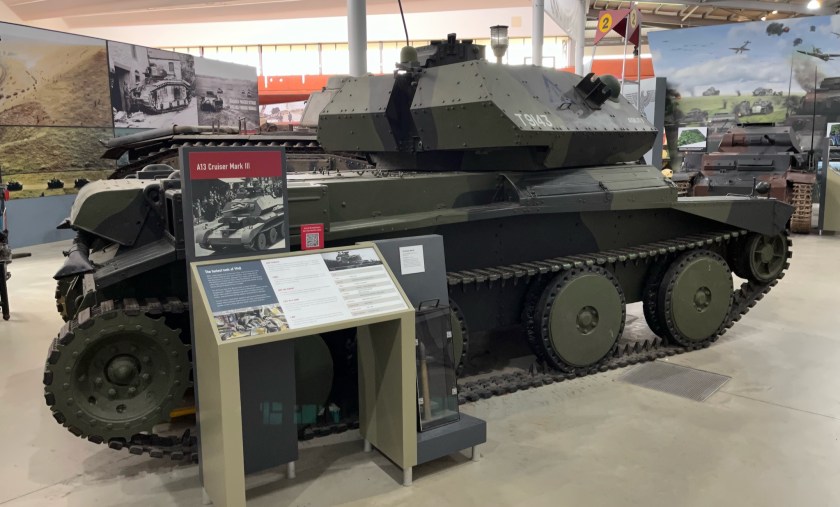There was a huge display of Tau forces defending themselves against an attacking force of Imperial Knights and Titans.
At the heart of the display is the huge Tau Manta.
The Manta, more formally known as the Manta Missile Destroyer, is a super-heavy Tau spacecraft that is also the Tau Empire’s closest equivalent to the Imperium of Man’s Titans and Ork Gargants. It is well-armoured for use in frontline combat and can deliver massive amounts of firepower to the battlefield to help support Tau ground forces during a frontal assault against entrenched enemy positions.
As for the model, it measures 630mm/25 inches long and has a wingspan of 860mm/34 inches! Weighing in at 12.5 kilos/28 pounds, it weighs six times as much as a Thunderhawk Gunship.
We never saw a version for Aeronautica Imperialis before the game was retired. As there are no xenon forces in Legions Imperialis, we won’t see one there either. Do think it is a pity that GW aren’t going to produce xenon forces for Legions Imperialis as it is a Horus Heresy based game. I do wonder if at some point in the future we might?
Across the battlefield were many different types of Tau forces.
Attacking were the Mechanicum with Knights and Titans.









